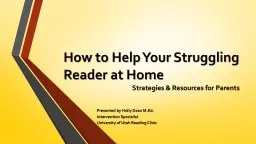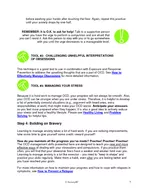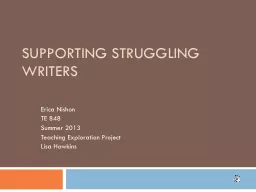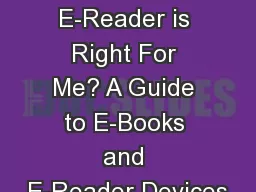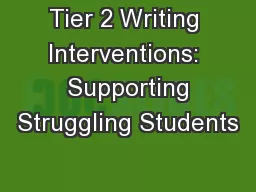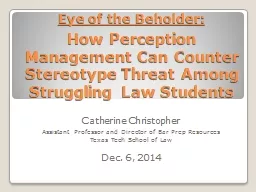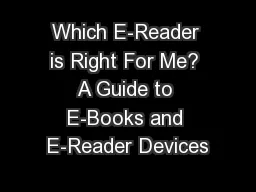PPT-How to Help Your Struggling Reader at Home
Author : olivia-moreira | Published Date : 2017-06-21
Strategies amp Resources for Parents Presented by Holly Dean MEd Intervention Specialist University of Utah Reading Clinic Wasatch Reading Summit October 78 2016
Presentation Embed Code
Download Presentation
Download Presentation The PPT/PDF document "How to Help Your Struggling Reader at Ho..." is the property of its rightful owner. Permission is granted to download and print the materials on this website for personal, non-commercial use only, and to display it on your personal computer provided you do not modify the materials and that you retain all copyright notices contained in the materials. By downloading content from our website, you accept the terms of this agreement.
How to Help Your Struggling Reader at Home: Transcript
Download Rules Of Document
"How to Help Your Struggling Reader at Home"The content belongs to its owner. You may download and print it for personal use, without modification, and keep all copyright notices. By downloading, you agree to these terms.
Related Documents

